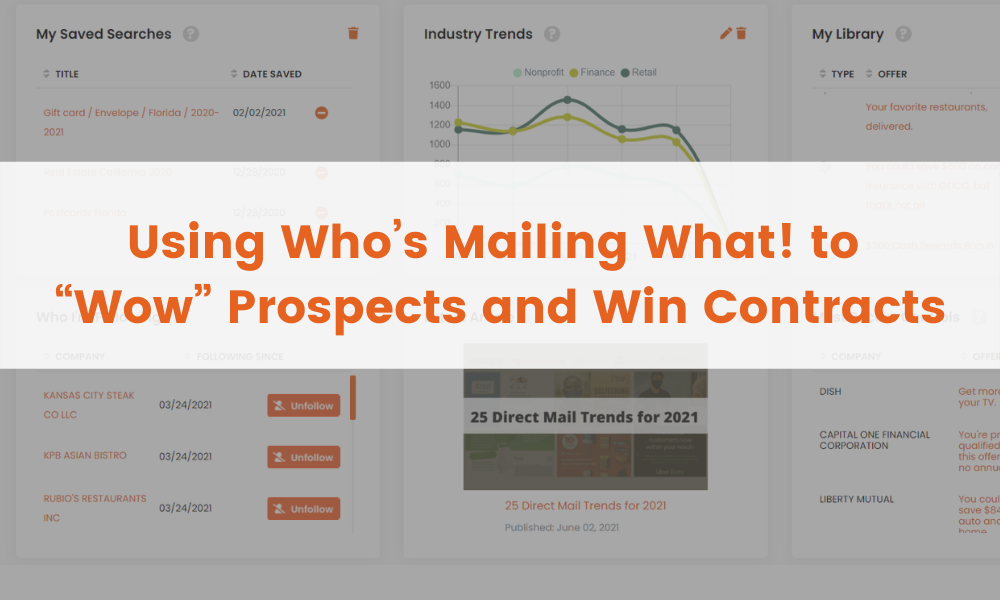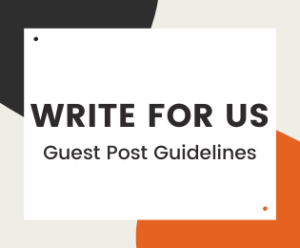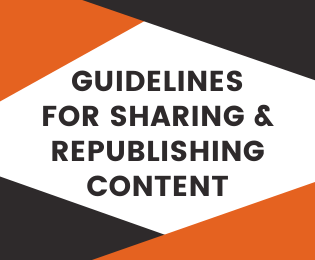HOW-TOS
Using Who’s Mailing What! to “Wow” Prospects and Win Contracts
Check out how to use Who’s Mailing What! to prep your sales team to win more customers. We take a look at how our features give you a leg (or two) up on your competitors.
As a print service provider (PSP), you have watched thousands of clients send direct mail pieces. You have invested heavily in your production technology, your workflow, and hiring great operators. Now you need to increase your sales to keep your press(es) busy and justify your investments. If only there were a crystal ball that could point you to the right prospects or, if you have a lead in mind, provide you with the kind of competitive reconnaissance that opens doors and helps to win their business.
While Who’s Mailing What! isn’t a crystal ball, it’s about as close as it comes. Using the simple features of the dashboard, you can gain insights that change the way your sales team approaches their prospects.
Recommended reading: 9 Ways to Generate Direct Mail Leads [Ideas for Direct Mail Service Providers]
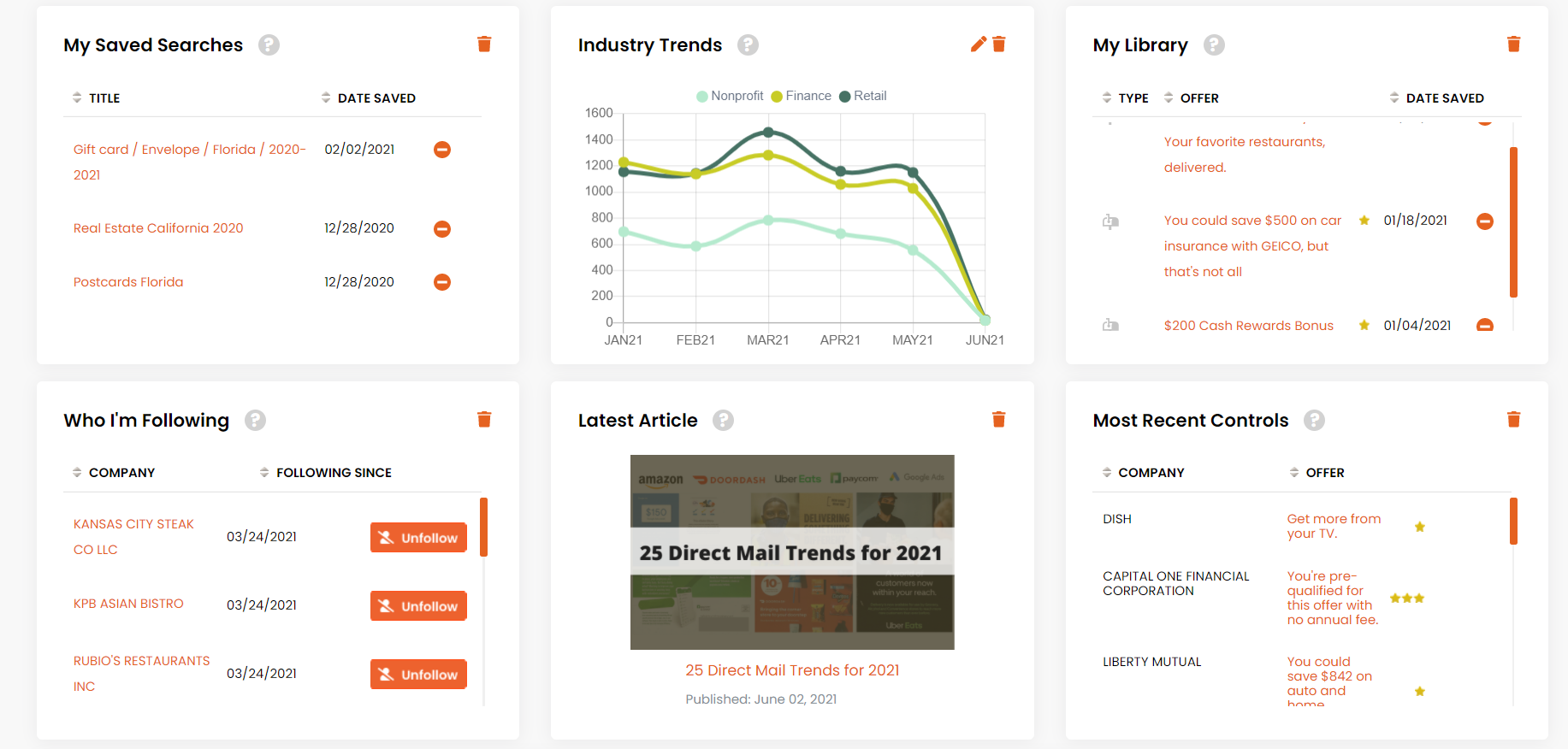
Among the competitive information you can easily obtain:
1. Access to direct mail campaign history, including messaging, creatives, and offers.
WMW! leverages AI and machine learning technology to scan each mail piece and make its entire content searchable. Search by the prospect’s company’s name, and if mail pieces from their company have been added to the database, see what images, formats, and offers they have run. Look at the timing of those pieces. Filter the campaigns by date. What have they run in the past six months? The past year? The past week?
Let’s say you want to research the First National Bank of Omaha. You put its name into the Google-like search tool and bring up its most recent campaign. (All examples are as of this writing, since the WMW! database is always being updated.)
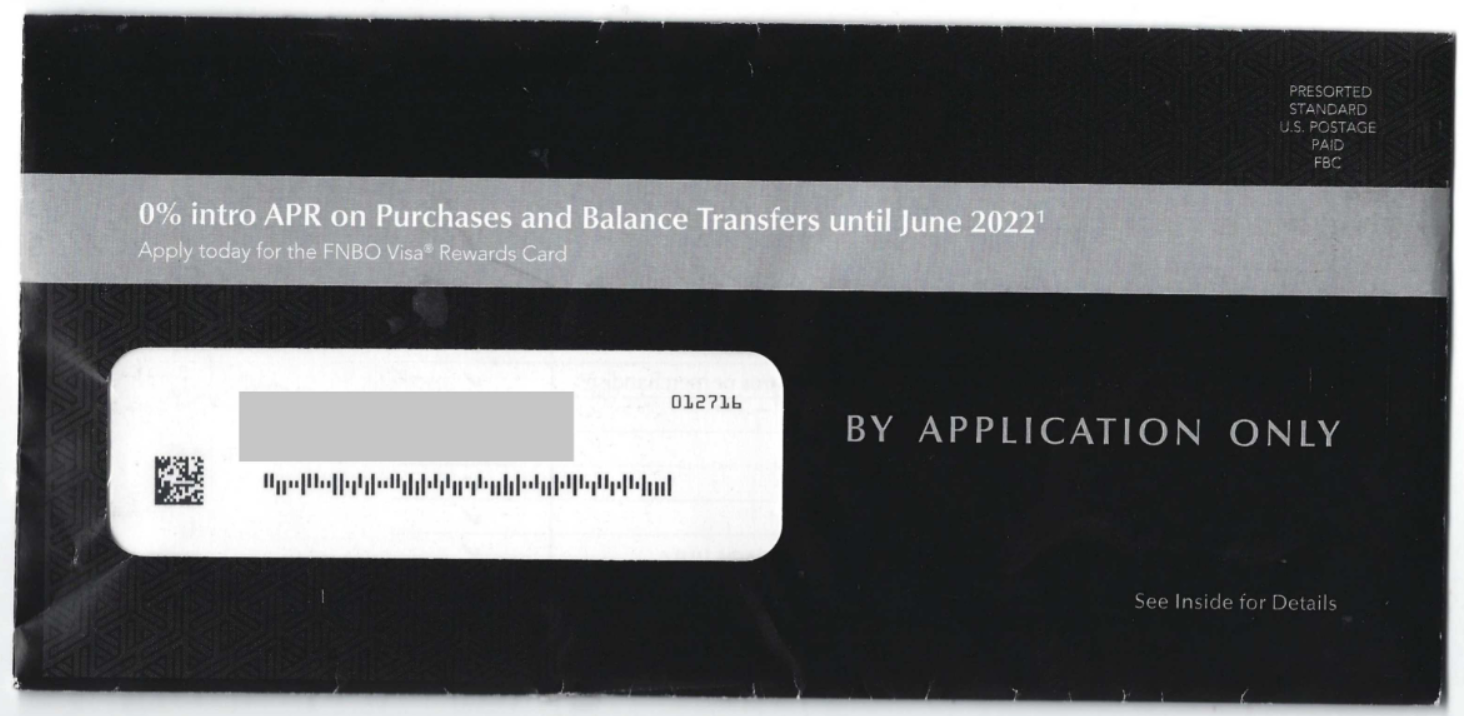
Click on the PDF, and you can view details, such as that the campaign was run in April 2021 and the format was an envelope containing 10 pages of information. You can see the call to action (“You are invited to enjoy the prestige of card membership”) and that it appealed to the desire for status.
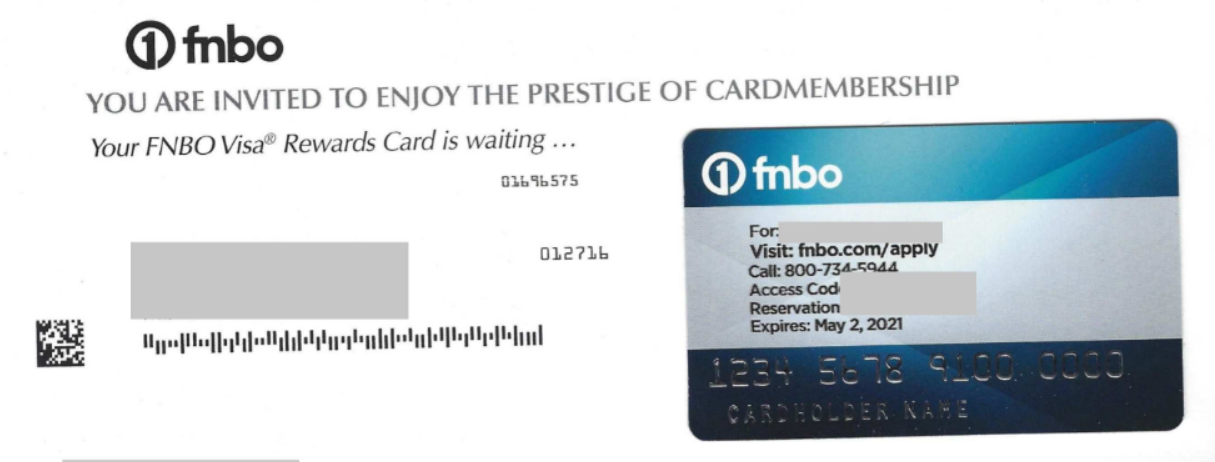
You can save the campaign, view more campaigns from the same bank, follow the company to keep track of its campaigns in the future, and download a PDF of the creative.
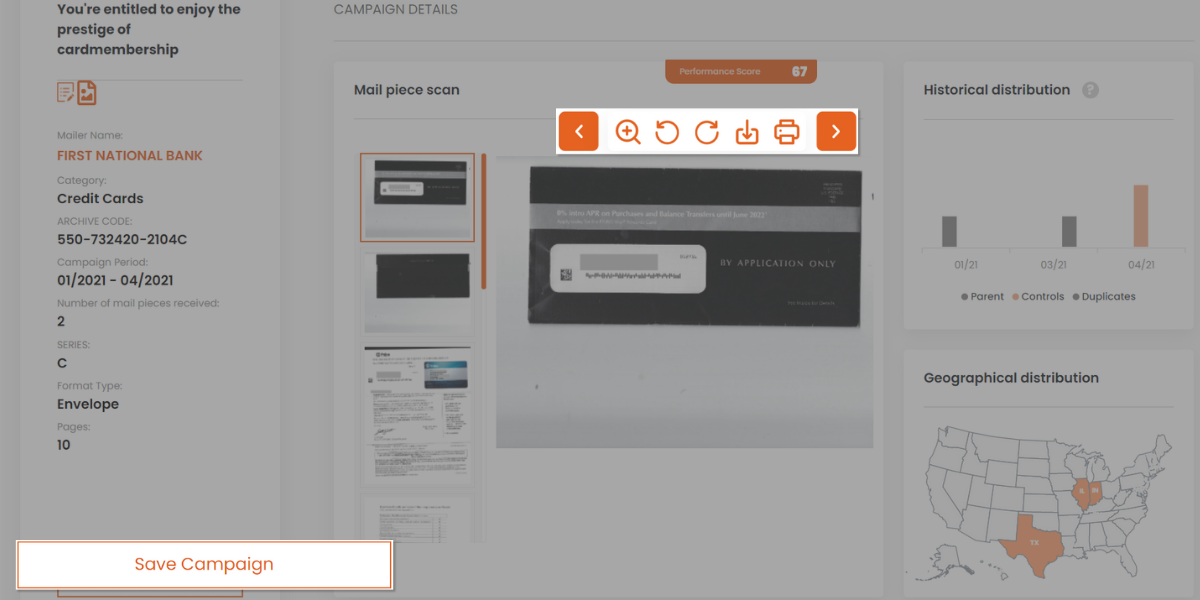
You can also see the bank’s campaign history. In this case, the campaigns go back to November 2020 when the company was first added to the WMW! database.
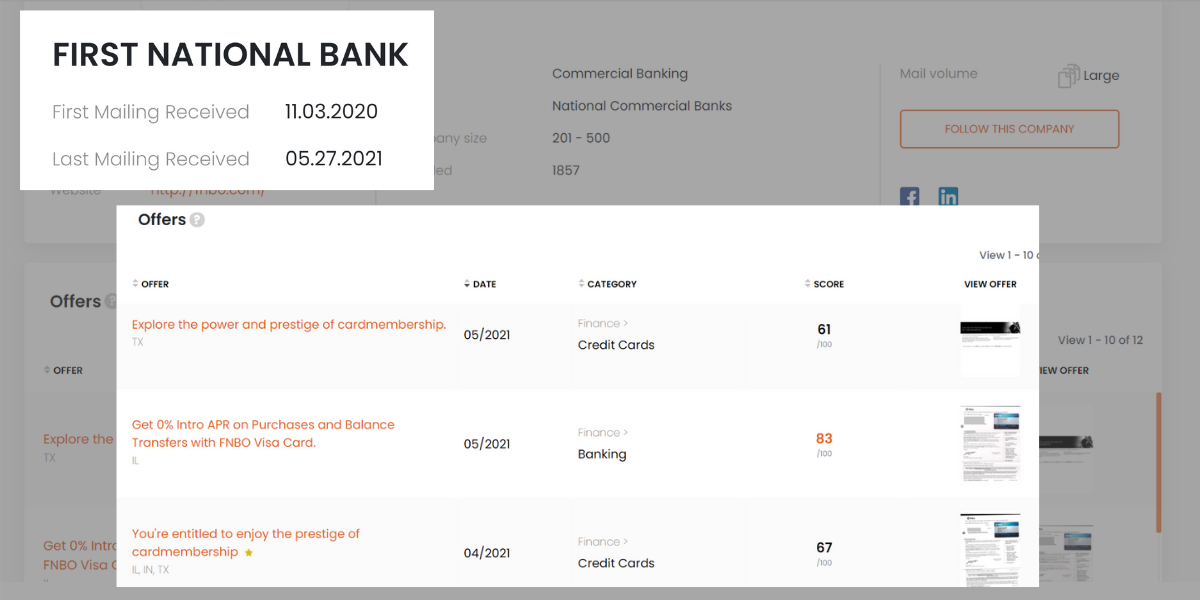
Even in that time, you will see that this bank is fairly a high-volume mailer. In the first five months of 2021 alone, it sent eleven different offers, across 15 different mailings, in five states.
This type of information gives you a tremendous advantage before making your first phone call. For example, this bank uses a lot of inserts in its envelopes. Did you just buy a blazing fast inserting machine? This gives you the perfect opening.
The WMW! Collection includes 132,000+ direct mail creatives and is constantly being updated, so the number of companies and campaigns is always growing. As of this writing, nearly 13,000 new pieces of creative had been added just in the prior 90 days.
2. Access to the Controls and Grand Controls, so you know what has worked for this prospect in the past.
In the WMW! database, Controls are campaigns that have been run repeatedly, suggesting that they are working well for your prospect. Grand Controls are those that have been run for years, so they have an evergreen quality. Don’t be intimidated by Controls and Grand Controls, thinking you don’t have anything to add. Just because something has worked in the past doesn’t mean it cannot be improved upon. In fact, even the best campaigns get stale after a while. Do you have technology or expertise to help them save money or build on the success they have already achieved?
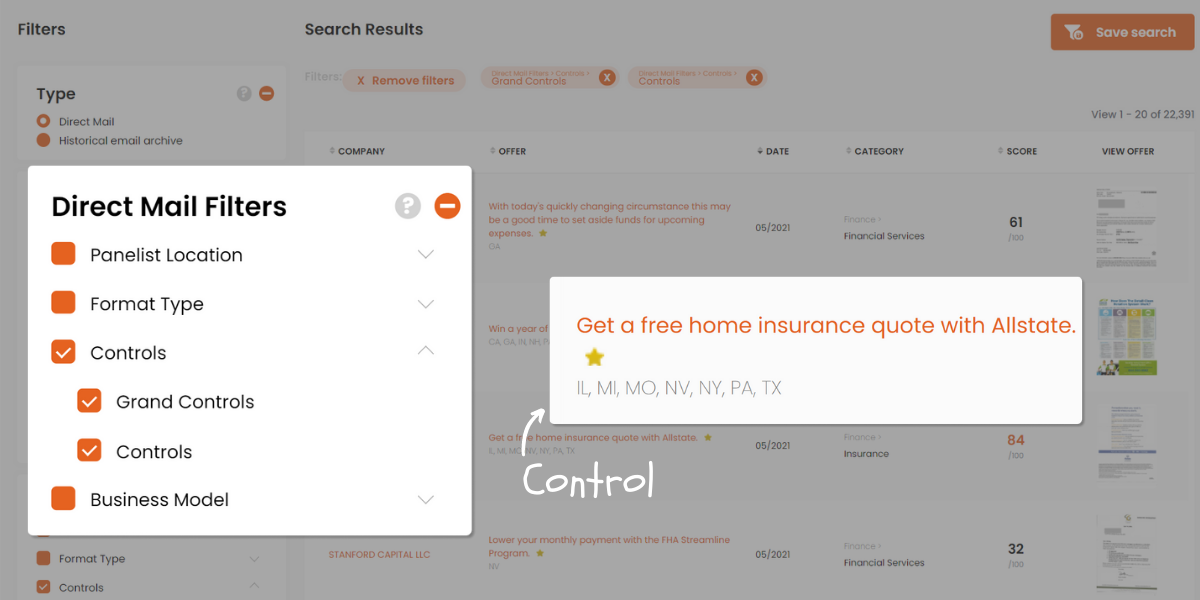
3. Access to WMW!’s proprietary Performance Score.
How can you tell how well your prospect’s campaigns are working? With Controls and Grand Controls, the bank itself is self-selecting these campaigns as effective by continuing to run them. To get another perspective, you can look at WMW!’s Performance Score. WMW! calculates a Performance Score for each version of direct mail creative as a prediction of how responsive that creative is likely to be. In building the Performance Score, WMW! takes into account variables such as:
- the category that is being analyzed;
- offer headlines;
- format responsiveness (whether the format – postcard, sales letter, flyer, etc. – is the most responsive for the industry).
- advertiser’s mail volume (the volume particular advertiser sends)
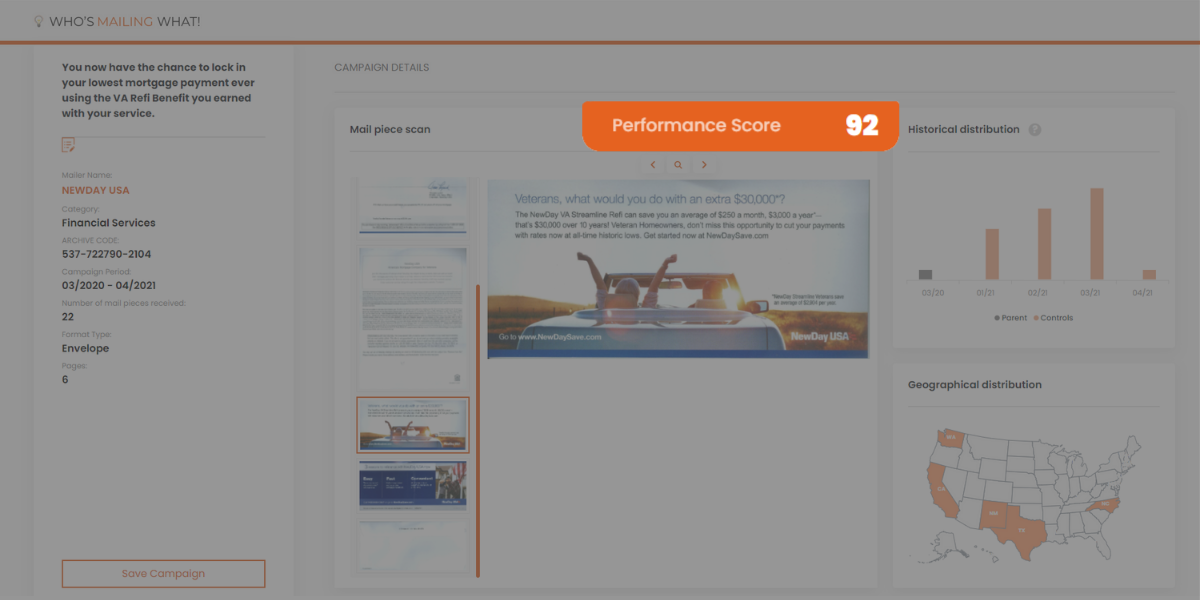
Knowing a company’s Performance Score gives you insight into whether these are campaigns you want to mimic or can improve upon (or both). Conversely, you might present to the prospect what not to do by looking at the lower-rated creative versions.
You can also pitch the ability to save the prospect money. Testing is expensive. Part of your value proposition is that, not only are you likely to increase the probability of success, but you can reduce their testing costs by having access to this information.
4. Access to competitors’ campaigns, so you can see what they are running, when they are running them, and how they are positioning their products and offers.
Research your prospect’s competitors the same way you research the prospect. Your prospect might have a good idea of what its competitors are doing, but the WMW! database gives you the ability to go into a meeting with the history of those campaigns and ideas for using that information for improving the prospect’s competitive edge.
How do you know who their competitors are? Use the search tool to search by industry vertical or by name and geography. Again using the example of the First National Bank of Omaha, you can select the “finance” filter and appropriate sub-filters to refine the results. If you want to cross-reference, you can search for the word “bank,” “credit card,” “financing,” or other words or phrases to see if anything else pops up.
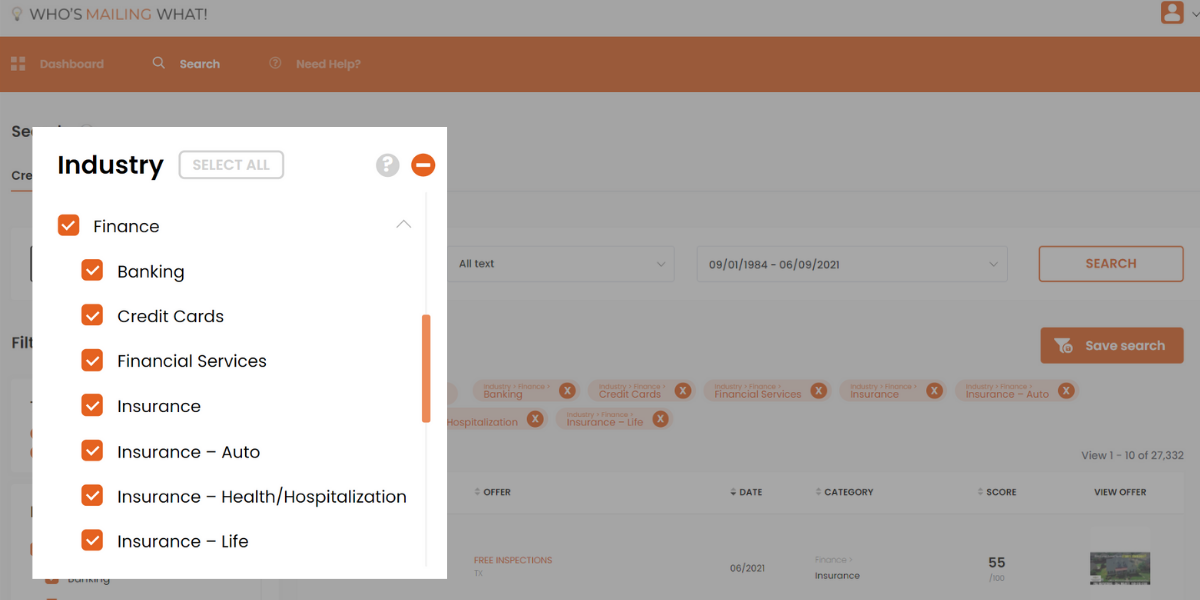
Take advantage of the Controls, Grand Controls, and Proforma Controls to research best-in-class examples.
5. Access to competitors’ Performance Scores.
Just as you can analyze the prospect’s Performance Scores to make suggestions, you can analyze the performance scores of your prospects’ competitors. See what the prospect’s competition is doing well — and, if they are receiving poor performance scores for a certain type of format, call to action, or messaging — take that capability into your presentation.
Final Thoughts
With this intelligence at your fingertips, your value as a marketing partner skyrockets. This knowledge sets you apart and opens doors to having that first detailed conversation. It allows you to show up prepared, not just to ask questions, but to offer suggestions and ideas. It allows you to showcase your ability to do competitive recon, which is something few of your competitors will be able to do.
The article is written by Heidi Tolliver-Walker, former print industry magazine editor and long-time industry analyst, content developer, author, and blogger.







